Even the hardiest drought-resistant plants have their limits. When water becomes scarce or conditions change dramatically, these resilient plants begin showing subtle distress signals that can escalate if left unaddressed. For vertical garden enthusiasts in arid regions, recognizing these early warning signs is crucial for maintaining thriving, sustainable plant displays with minimal water usage.
This comprehensive guide will help you identify the visual cues of water stress in your drought-tolerant plants, understand the underlying causes, and implement effective solutions specifically tailored for vertical garden setups. By mastering these skills, you’ll be able to maintain healthier plants while conserving precious water resources.
What Is Water Stress in Drought-Resistant Plants?
Left: Healthy drought-resistant plant. Right: Early signs of water stress in the same species.
Water stress occurs when a plant cannot absorb enough moisture to maintain its normal physiological functions. Contrary to popular belief, drought-resistant plants aren’t immune to water stress—they’ve simply evolved mechanisms to endure it longer than other species. When these adaptive mechanisms become overwhelmed, the plant begins to show signs of distress.
Even plants marketed as “drought-tolerant” require consistent water during their establishment period (typically the first year). Once established, they need less frequent watering but still require some moisture, especially during extended dry periods or extreme heat waves.
Common Causes of Water Stress in Drought-Resistant Plants
The Paradox of Overwatering
Interestingly, overwatering can cause symptoms that mimic drought stress. When soil remains waterlogged, roots cannot access oxygen, leading to root rot and an inability to absorb water properly. This creates a situation where a plant surrounded by moisture is effectively experiencing drought at the cellular level.
In vertical gardens, this problem is particularly common due to improper drainage or irrigation systems that deliver too much water too frequently. Understanding the difference between drought stress and overwatering is crucial for proper plant care.
Visual Signs of Water Stress in Drought-Resistant Plants
Learning to recognize the visual cues of water stress allows you to intervene before permanent damage occurs. Here are the key indicators to watch for in your vertical garden:
Wilting or Curling Leaves
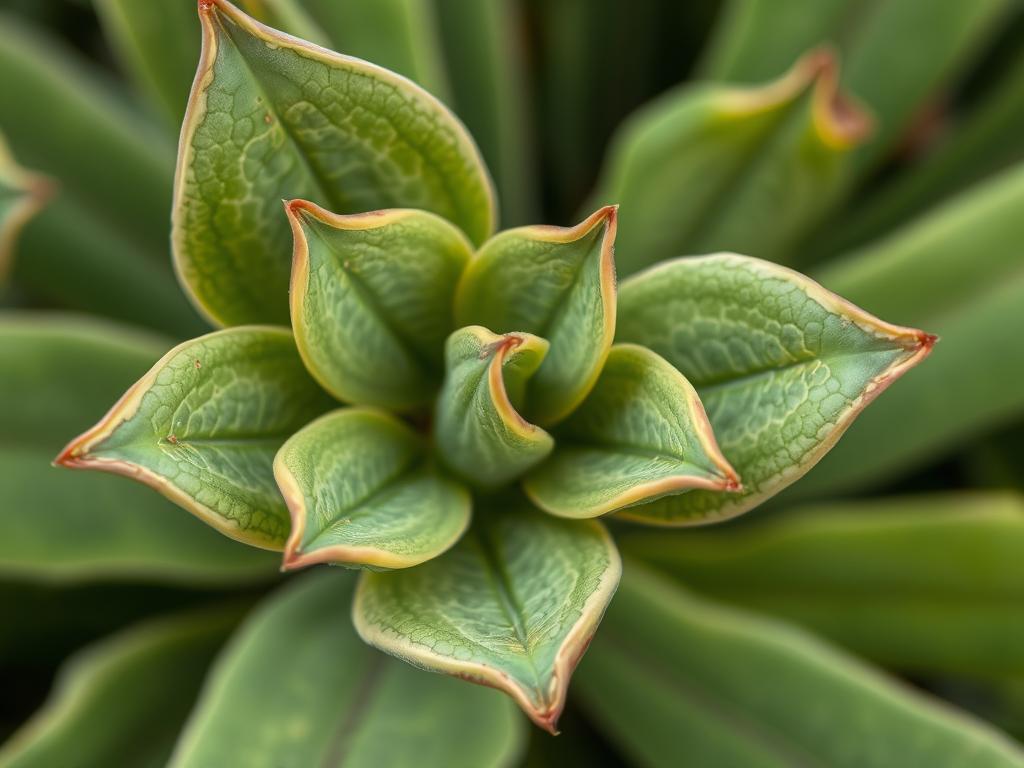
Wilting is often the first visible sign of water stress. Leaves that normally stand firm begin to droop, particularly during the hottest part of the day. This occurs because the plant cannot maintain adequate water pressure (turgor) in its cells.
Early-Stage Wilting:
- Leaves droop during midday heat but recover in the evening
- Leaf edges may begin to curl inward
- Plants appear less vibrant overall
Advanced Wilting:
- Leaves remain wilted throughout the day and night
- Significant curling or rolling of leaves
- Stems may begin to droop as well
Pro Tip: In vertical gardens, plants at the top often show wilting first as gravity pulls water downward. Check these plants regularly as they can serve as early warning indicators for the entire system.
Leaf Discoloration
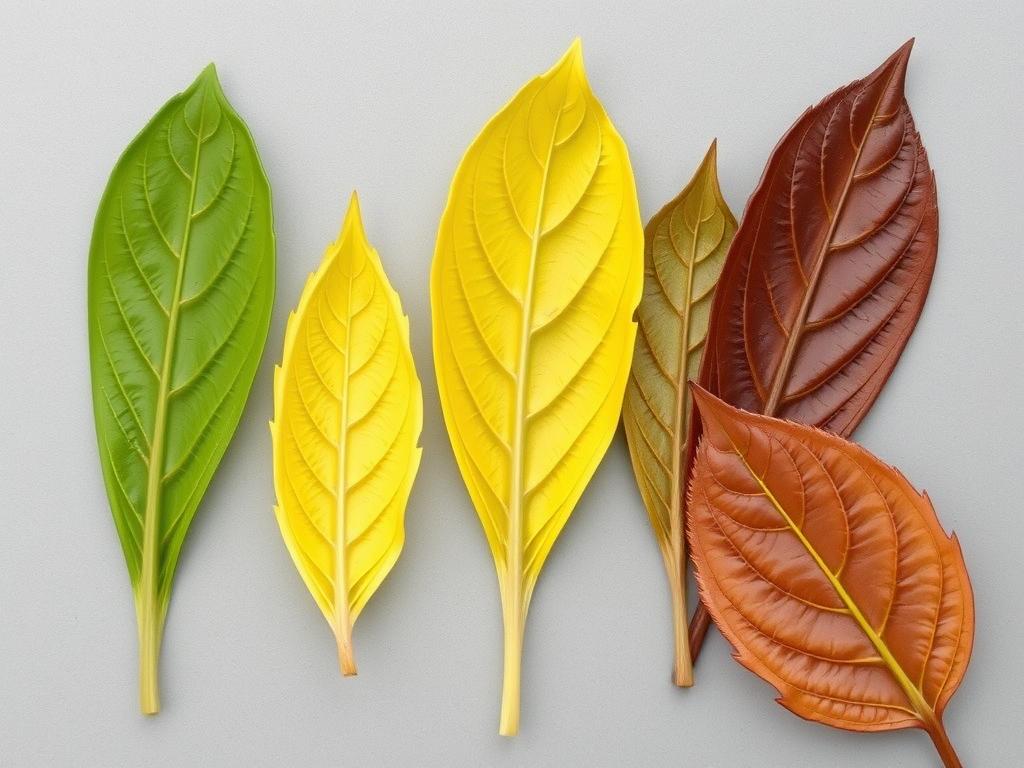
As water stress progresses, leaves often change color in distinctive patterns. These changes occur as the plant breaks down chlorophyll and redirects resources away from less essential tissues.
Leaf Drop or Stunted Growth
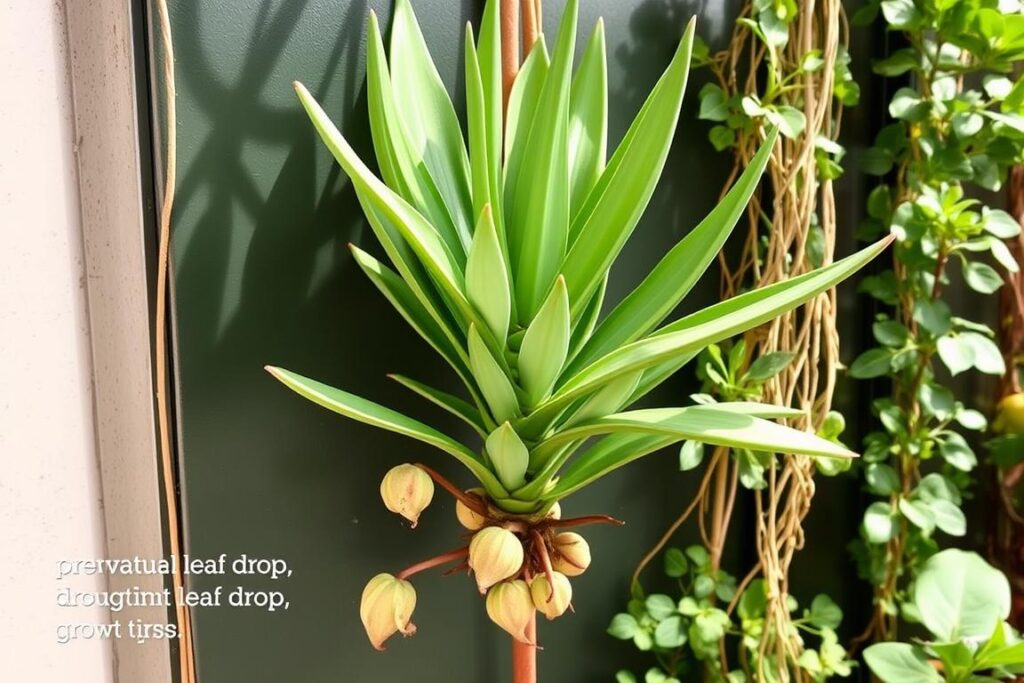
When water becomes severely limited, plants employ survival strategies that include sacrificing some parts to preserve others. This manifests as:
Leaf Shedding:
- Premature dropping of older leaves
- Sudden leaf fall during hot periods
- Thinning canopy or foliage
Growth Impacts:
- Smaller-than-normal new leaves
- Shortened internodes (distance between leaves)
- Delayed or absent flowering
- Overall compact appearance
Soil and Root Indicators
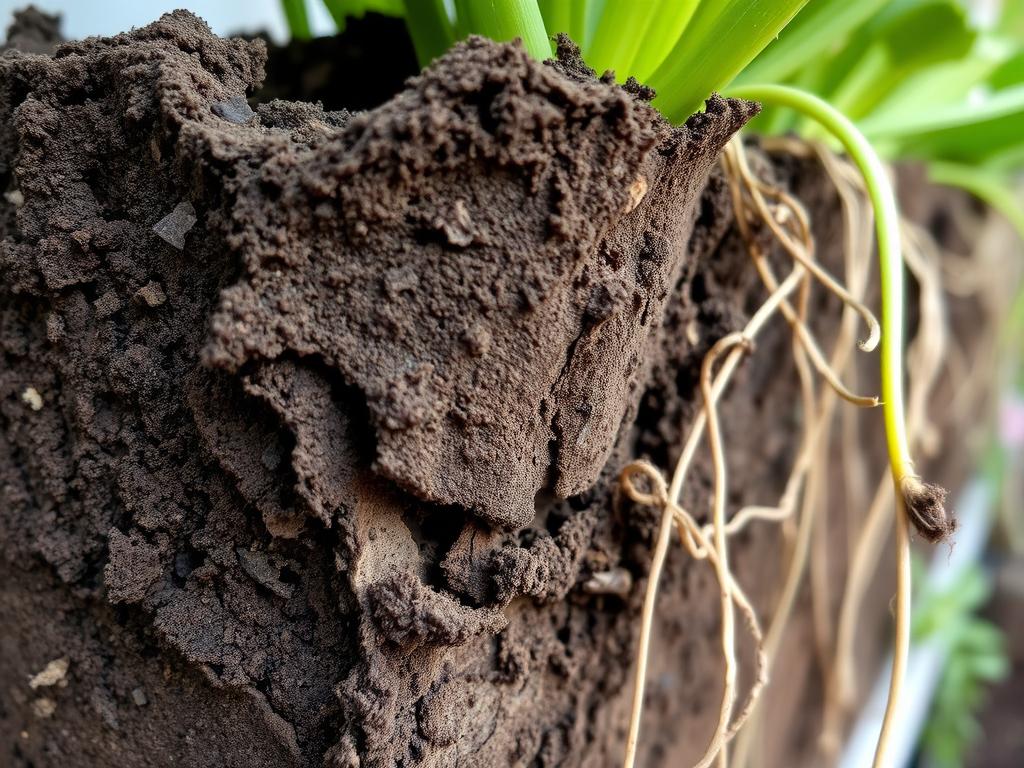
The condition of your growing medium provides valuable clues about water status:
Drought Stress vs. Overwatering: How to Tell the Difference
Drought Stress Signs:
- Crispy, brown leaf edges
- Dry, cracking soil
- Wilting that worsens throughout the day
- Slow recovery after watering
Overwatering Signs:
- Soft, yellowing leaves (often lower ones first)
- Consistently wet soil
- Wilting that doesn’t improve with watering
- Fungal growth or musty smell
Step-by-Step Response Plan for Water-Stressed Plants
Once you’ve identified water stress in your drought-resistant plants, taking prompt action can prevent further damage and help them recover. Here’s a systematic approach specifically tailored for vertical garden setups:
Immediate Actions to Revive Water-Stressed Plants
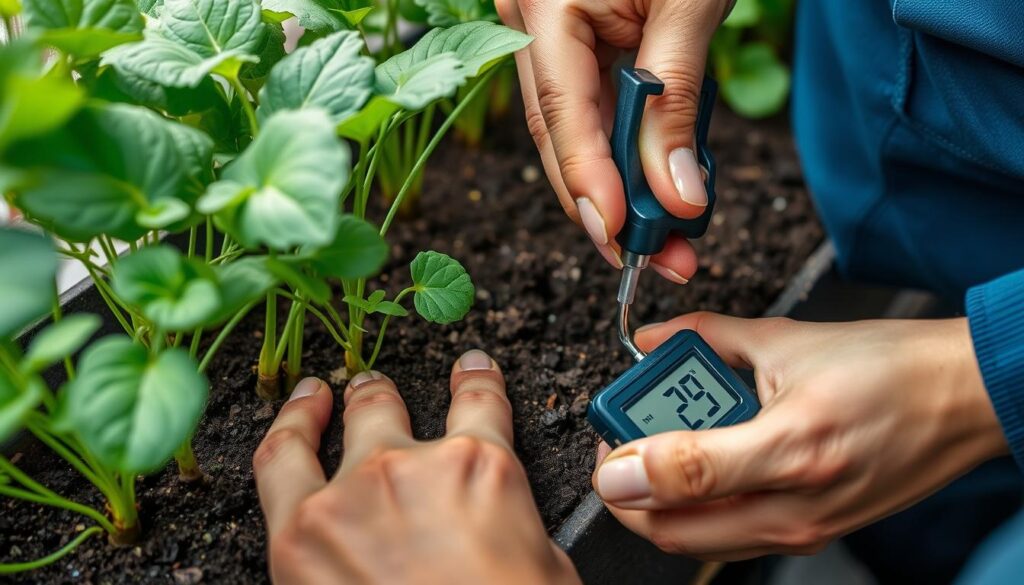
Before watering, determine the actual moisture level in your growing medium. In vertical gardens, moisture can vary significantly between top and bottom sections.
- Finger Test: Insert your finger 2-3 inches into the soil. If it feels dry at that depth, watering is needed.
- Moisture Meter: For more accuracy, use a moisture meter to check different areas of your vertical garden.
When watering drought-stressed plants, technique matters as much as quantity.
- Water slowly to allow absorption without runoff
- For severe stress, water in stages: a little first, then more after 30 minutes
- Focus on the root zone rather than spraying foliage
- In vertical systems, ensure water reaches all sections evenly
Reducing transpiration helps stressed plants recover.
- Move portable vertical gardens to shadier locations temporarily
- Install temporary shade cloth (30-50% shade) during peak heat
- Remove shade once plants show signs of recovery
Remove severely affected parts to help the plant redirect resources.
- Cut away crispy or dead leaves and stems
- For flowering plants, remove flower buds to reduce water demands
- Use clean, sharp tools to minimize additional stress
Need help assessing your plants?
Download our free “Visual Guide to Water Stress Diagnosis” with side-by-side comparisons of healthy vs. stressed plants and a printable assessment checklist.
Long-Term Prevention Strategies
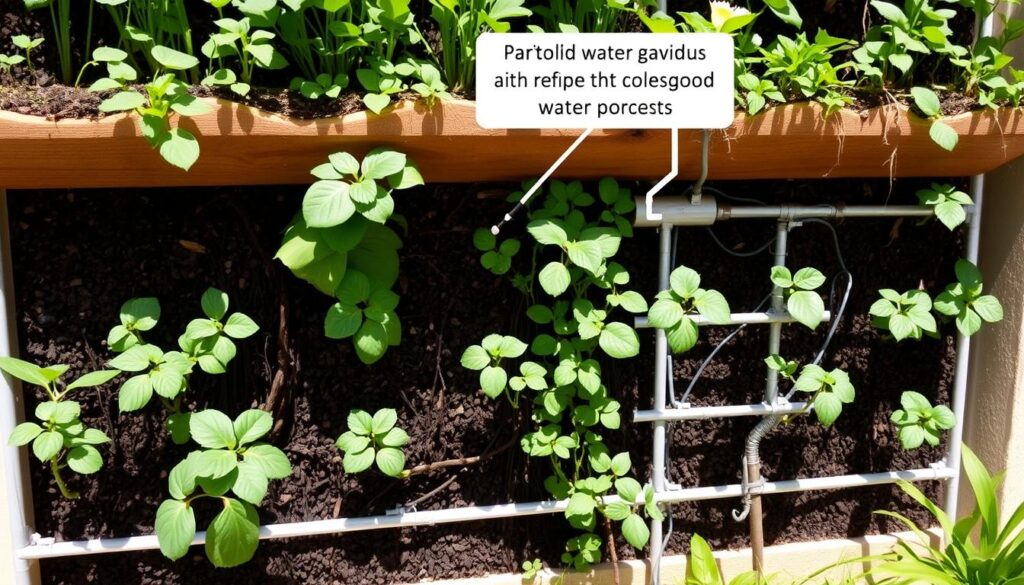
Preventing water stress is always easier than treating it. Implement these strategies to build resilience in your vertical garden:
Soil Amendments for Better Water Retention
For New Plantings:
For Established Plants:
Mulching Techniques for Vertical Gardens
Mulching is especially important in vertical gardens where soil exposure and evaporation rates are high:
Selecting Truly Drought-Resistant Species
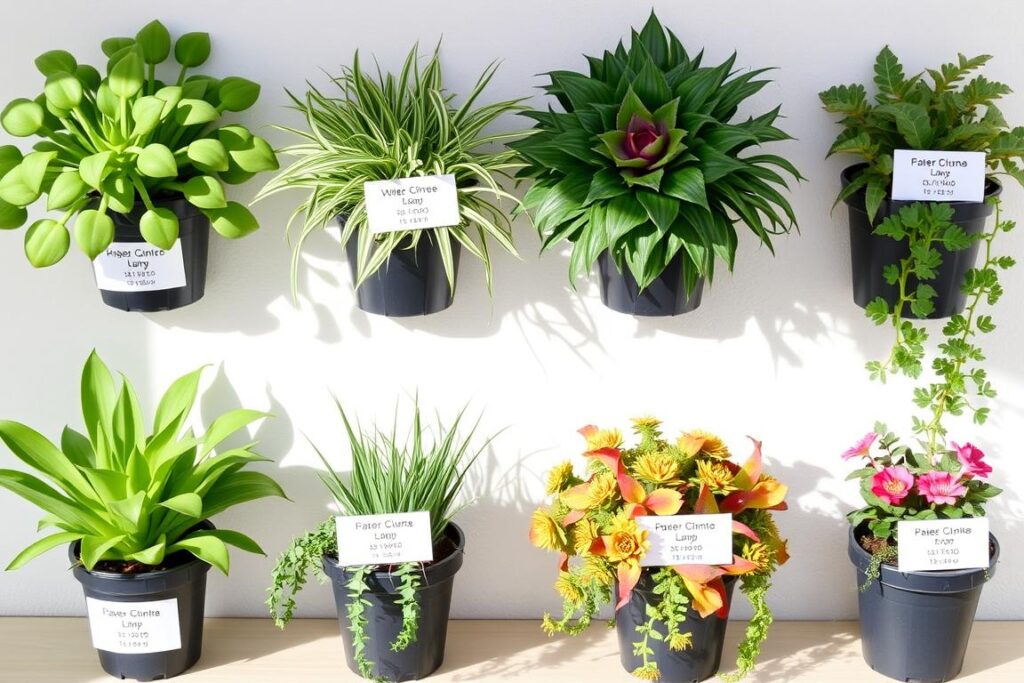
Not all “drought-tolerant” plants are created equal. For vertical gardens in truly arid conditions, focus on:
“The key to water-efficient vertical gardens isn’t just choosing drought-resistant plants—it’s creating a system where those plants can access water when they need it while avoiding waste.”
Vertical Gardening Tips for Dry Climates
Vertical gardens in arid environments face unique challenges that require specialized approaches to water management. These strategies will help you create water-efficient vertical displays that thrive despite limited moisture:
Water-Smart Design Ideas
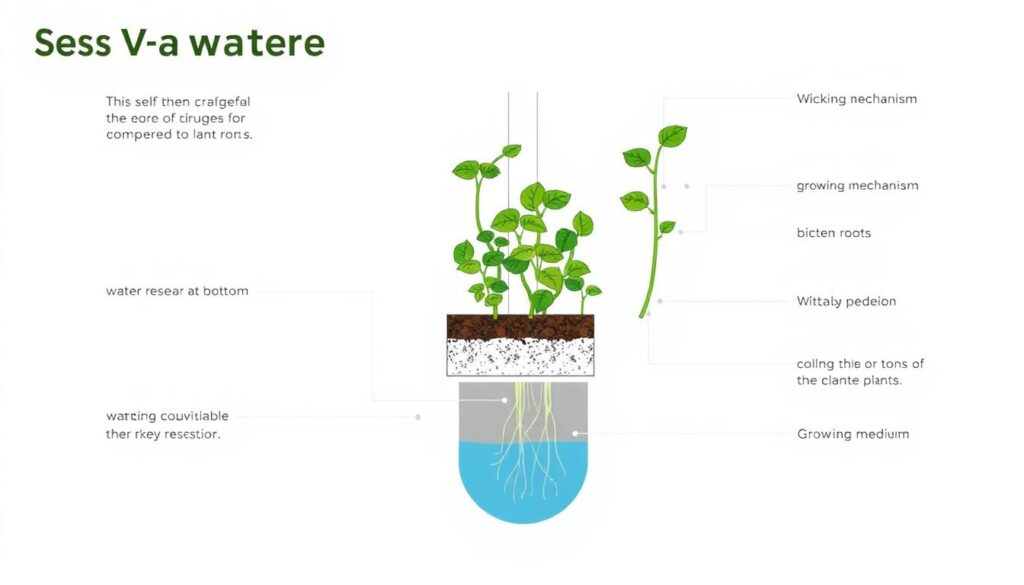
Self-Watering Systems
Self-watering vertical gardens provide consistent moisture while reducing water waste:
Efficient Irrigation Options
The right irrigation system can dramatically reduce water consumption in vertical gardens:
Important: Always check your vertical garden’s irrigation system for clogs or uneven distribution. In vertical setups, a blocked emitter can leave an entire section without water while other areas receive too much.
Microclimate Management
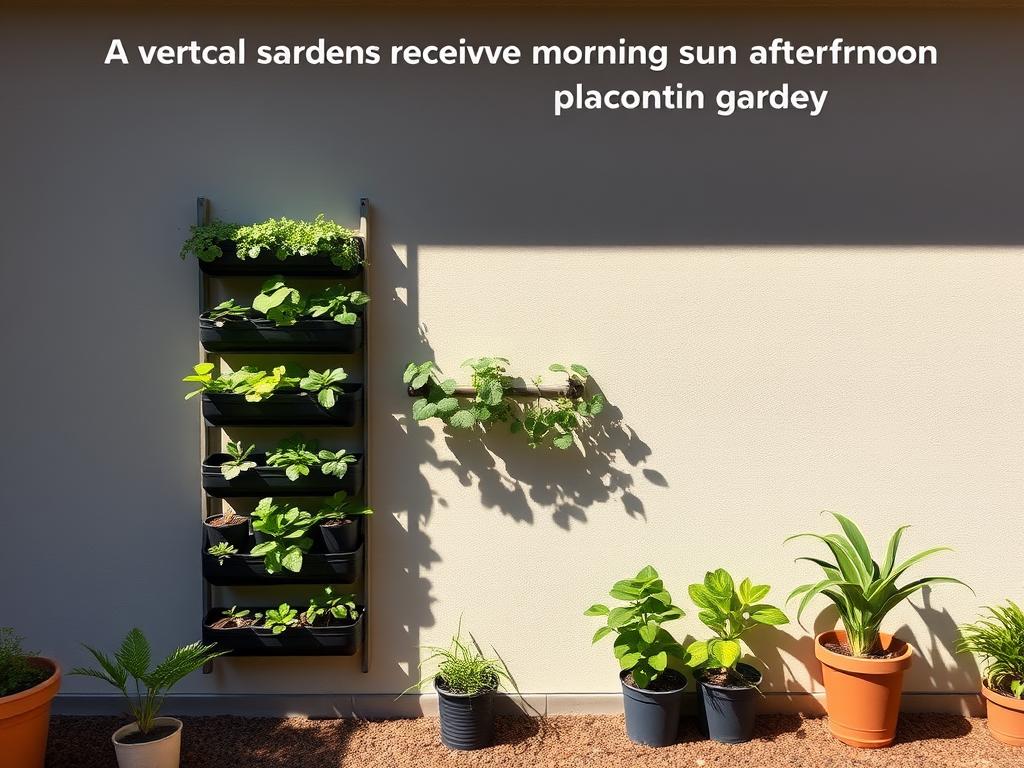
Strategic positioning and design can create favorable microclimates that reduce water stress:
Optimal Positioning
Humidity Enhancement
Increasing local humidity reduces transpiration and water loss:
Essential Tools & Resources for Managing Water Stress
Having the right tools on hand makes monitoring and managing water stress much easier. Here are affordable options that help maintain healthy plants with minimal water usage:
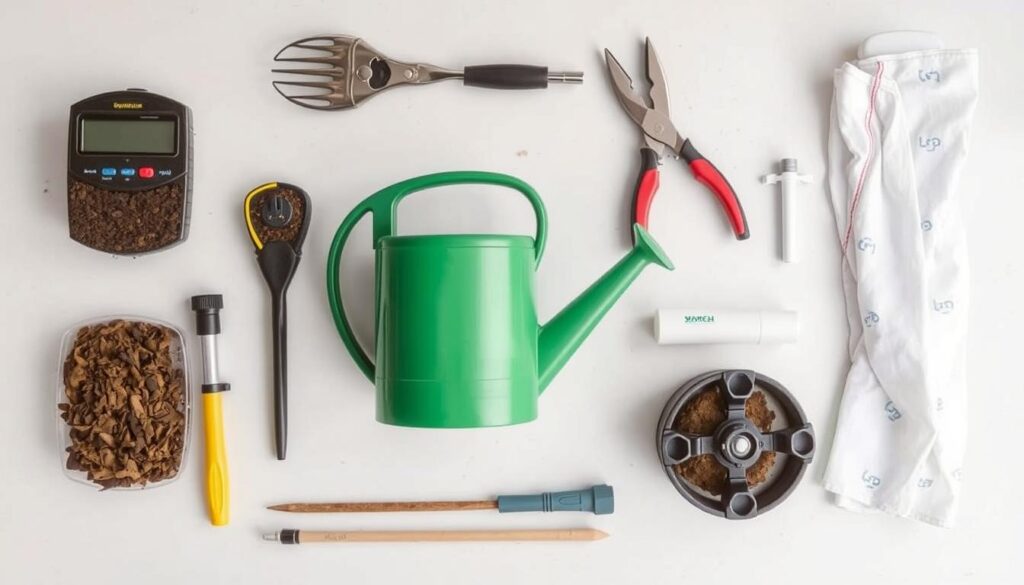
Monitoring Tools
Soil Moisture Meters
These affordable devices provide accurate readings of soil moisture at different depths. Look for models with probes long enough to reach the center of your planting pockets.
Price Range: $10-30
Rain Gauges
Even in vertical gardens, knowing local rainfall helps determine supplemental watering needs. Digital gauges can track patterns over time.
Price Range: $5-25
Environmental Monitors
Devices that track temperature, humidity, and light levels help identify stress-inducing conditions before plants show symptoms.
Price Range: $20-50
DIY Solutions
Homemade Shade Cloth
Create temporary shade using:
- Old bed sheets secured with clothespins
- Bamboo blinds hung above plants
- Mesh laundry bags stretched over frames
Water Reservoir Bottles
Make slow-release watering devices:
- Plastic bottles with tiny holes in the cap
- Wine bottles filled with water and quickly inverted into soil
- Commercial watering spikes that accept standard bottles
Get a Personalized Watering Plan
Answer a few questions about your vertical garden setup, plant types, and local climate to receive a customized watering schedule and stress prevention plan.
Frequently Asked Questions About Water Stress in Drought-Resistant Plants
Can drought-resistant plants recover from severe water stress?
Yes, many drought-resistant plants can recover from even severe water stress if action is taken promptly. Their natural adaptations give them remarkable resilience. Recovery depends on:
- The duration and severity of the stress period
- The specific plant species and its health before stress occurred
- How quickly appropriate watering is restored
Most drought-tolerant plants will show signs of recovery within 1-2 weeks of proper watering resumption. However, some damage, like leaf scorch or dropped leaves, won’t reverse even after the plant recovers.
How can I tell if I’m overwatering or underwatering my vertical garden?
This common confusion can be resolved by examining multiple symptoms:
Underwatering Signs:
- Soil is dry and pulling away from container edges
- Wilting improves temporarily after watering
- Leaves become crispy and brittle
- Growth slows or stops entirely
Overwatering Signs:
- Soil remains consistently wet or soggy
- Wilting doesn’t improve after watering
- Leaves turn yellow, starting from the bottom
- Fungus or algae appears on soil surface
- Root rot may be visible when inspected
When in doubt, check the moisture level 2-3 inches below the soil surface. This depth provides a more accurate picture of conditions in the root zone.
Should I fertilize plants showing signs of water stress?
No, avoid fertilizing plants that are actively showing water stress symptoms. Fertilizer salts can exacerbate stress by drawing moisture away from roots through osmotic pressure. Additionally, stressed plants cannot effectively utilize nutrients and may suffer fertilizer burn.
Wait until plants have recovered from water stress and have been receiving proper moisture for at least 2-3 weeks before applying any fertilizer. When you do fertilize, use a diluted solution (half the recommended strength) to avoid shocking the recovering root system.
How often should I water drought-resistant plants in a vertical garden?
Watering frequency depends on multiple factors including:
- Plant species and their specific water requirements
- Container size and material (smaller pockets dry out faster)
- Local climate conditions (temperature, humidity, wind)
- Exposure to sun and elements
- Growing medium composition
As a general guideline, most established drought-resistant plants in vertical gardens need thorough watering when the top 2-3 inches of soil feels dry to the touch. This might mean watering once every 7-14 days in moderate conditions, or more frequently during extreme heat.
Always prioritize checking soil moisture over following a rigid schedule. Seasonal adjustments are necessary as water needs decrease in cooler months and increase during summer.
Maintaining Healthy Drought-Resistant Plants in Your Vertical Garden
Understanding the signs of water stress in drought-resistant plants empowers you to create thriving vertical gardens even in challenging arid conditions. By recognizing early warning signals, implementing appropriate watering techniques, and creating supportive growing environments, you can enjoy beautiful, sustainable displays that conserve water while enhancing your living space.
Remember that even the most drought-tolerant plants have limits and will communicate their needs through visual cues if you know what to look for. Regular monitoring, thoughtful design, and responsive care will ensure your vertical garden remains a vibrant, resilient feature in your sustainable lifestyle.
Ready to upgrade your vertical garden?
Download our comprehensive guide “Water-Smart Vertical Gardening: Design, Plant Selection & Maintenance” and transform your space with beautiful, drought-resistant plants that thrive with minimal water.
Will is a vertical gardening enthusiast and sustainable cultivation specialist with a passion for helping people grow fresh food in small spaces and dry climates. With years of hands-on experience testing smart irrigation systems, optimizing urban gardens, and exploring eco-friendly solutions, this author shares clear, practical tips to turn any corner into a productive garden. Whether on a sunny balcony or in a compact backyard, Will helps readers save water, maximize space, and enjoy healthy harvests year-round. When not tending to his plants, you’ll find him sipping herbal tea and sketching ideas for new sustainable projects.

